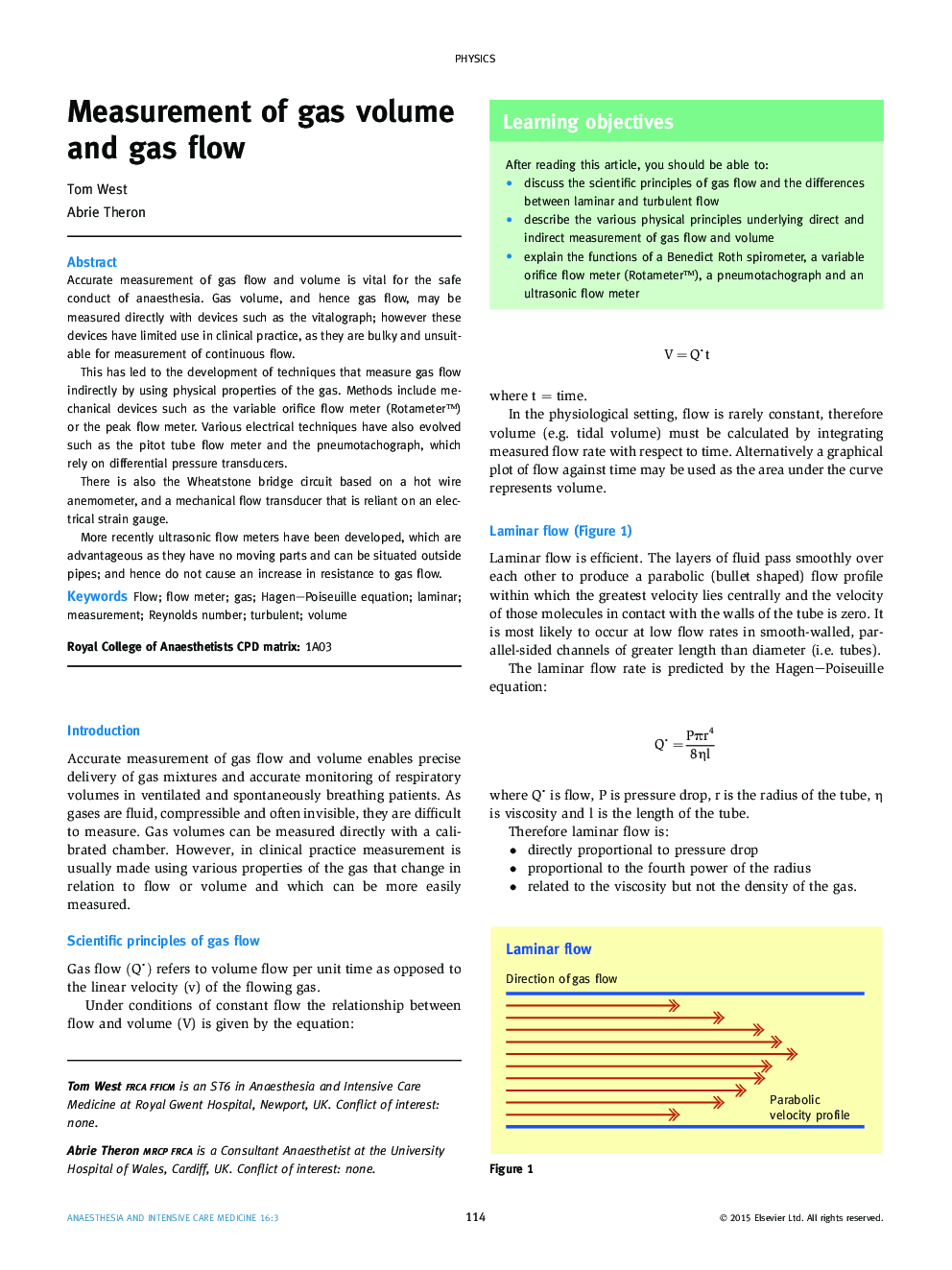| Article ID | Journal | Published Year | Pages | File Type |
|---|---|---|---|---|
| 2742289 | Anaesthesia & Intensive Care Medicine | 2015 | 5 Pages |
Accurate measurement of gas flow and volume is vital for the safe conduct of anaesthesia. Gas volume, and hence gas flow, may be measured directly with devices such as the vitalograph; however these devices have limited use in clinical practice, as they are bulky and unsuitable for measurement of continuous flow.This has led to the development of techniques that measure gas flow indirectly by using physical properties of the gas. Methods include mechanical devices such as the variable orifice flow meter (Rotameter™) or the peak flow meter. Various electrical techniques have also evolved such as the pitot tube flow meter and the pneumotachograph, which rely on differential pressure transducers.There is also the Wheatstone bridge circuit based on a hot wire anemometer, and a mechanical flow transducer that is reliant on an electrical strain gauge.More recently ultrasonic flow meters have been developed, which are advantageous as they have no moving parts and can be situated outside pipes; and hence do not cause an increase in resistance to gas flow.
